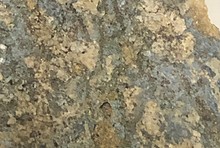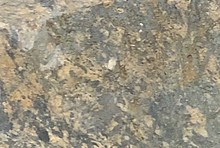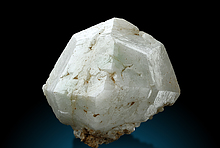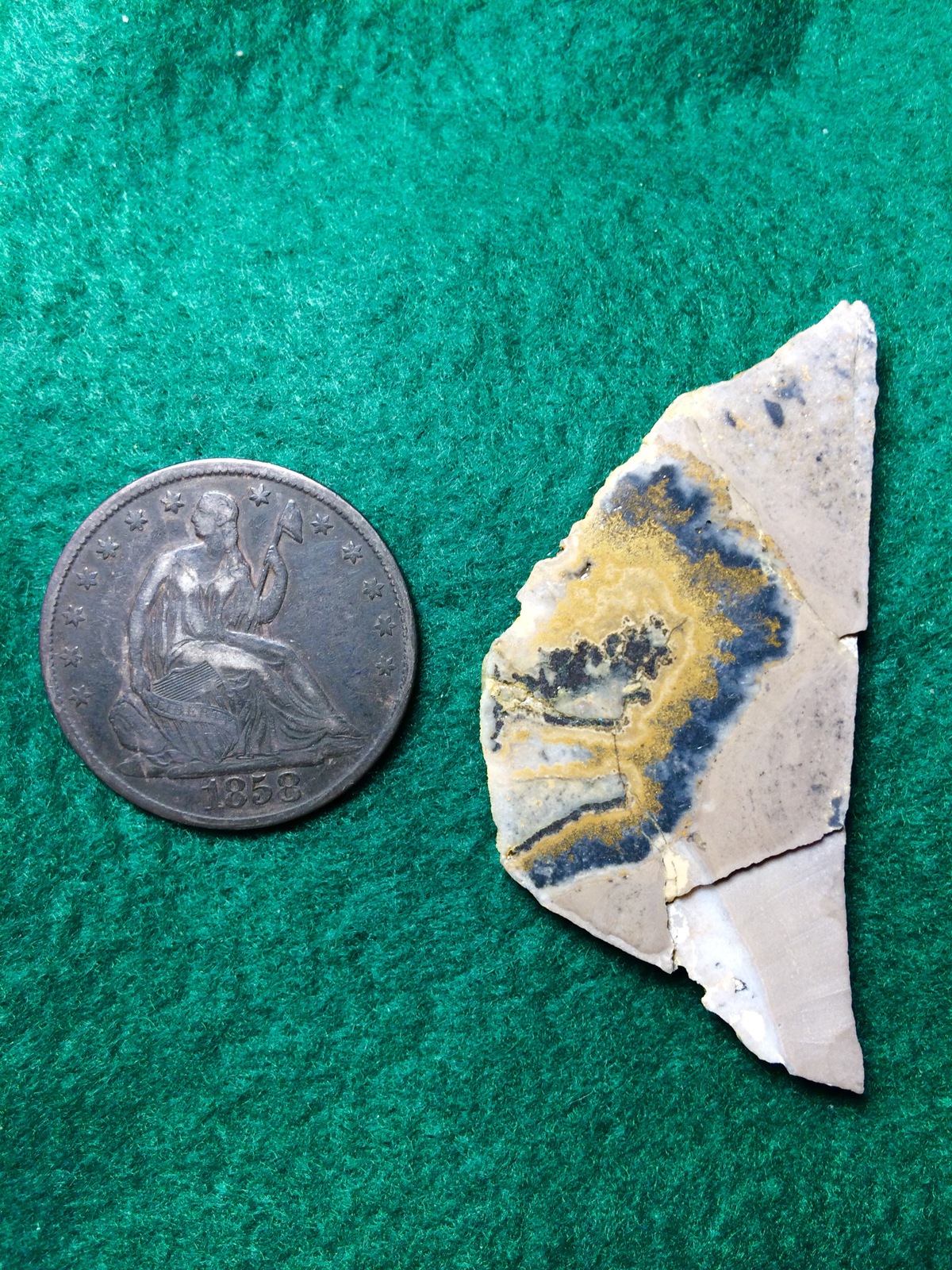Home PageAbout MindatThe Mindat ManualHistory of MindatCopyright StatusWho We AreContact UsAdvertise on Mindat
Donate to MindatCorporate SponsorshipSponsor a PageSponsored PagesMindat AdvertisersAdvertise on Mindat
Learning CenterWhat is a mineral?The most common minerals on earthInformation for EducatorsMindat ArticlesThe ElementsThe Rock H. Currier Digital LibraryGeologic Time
Minerals by PropertiesMinerals by ChemistryAdvanced Locality SearchRandom MineralRandom LocalitySearch by minIDLocalities Near MeSearch ArticlesSearch GlossaryMore Search Options
The Mindat ManualAdd a New PhotoRate PhotosLocality Edit ReportCoordinate Completion ReportAdd Glossary Item
Mining CompaniesStatisticsUsersMineral MuseumsClubs & OrganizationsMineral Shows & EventsThe Mindat DirectoryDevice SettingsThe Mineral Quiz
Photo SearchPhoto GalleriesSearch by ColorNew Photos TodayNew Photos YesterdayMembers' Photo GalleriesPast Photo of the Day GalleryPhotography
╳Discussions
💬 Home🔎 Search📅 LatestGroups
EducationOpen discussion area.Fakes & FraudsOpen discussion area.Field CollectingOpen discussion area.FossilsOpen discussion area.Gems and GemologyOpen discussion area.GeneralOpen discussion area.How to ContributeOpen discussion area.Identity HelpOpen discussion area.Improving Mindat.orgOpen discussion area.LocalitiesOpen discussion area.Lost and Stolen SpecimensOpen discussion area.MarketplaceOpen discussion area.MeteoritesOpen discussion area.Mindat ProductsOpen discussion area.Mineral ExchangesOpen discussion area.Mineral PhotographyOpen discussion area.Mineral ShowsOpen discussion area.Mineralogical ClassificationOpen discussion area.Mineralogy CourseOpen discussion area.MineralsOpen discussion area.Minerals and MuseumsOpen discussion area.PhotosOpen discussion area.Techniques for CollectorsOpen discussion area.The Rock H. Currier Digital LibraryOpen discussion area.UV MineralsOpen discussion area.Recent Images in Discussions
GeneralStunning gold specimen

14th Feb 2017 17:45 UTCLarry Maltby Expert
Is the center area quartz?
Is the gold deposit sequential?
Is the gold band a replacement like copper banded agate?

14th Feb 2017 19:33 UTCWayne Corwin

14th Feb 2017 20:21 UTCHolger Hartmaier 🌟
14th Feb 2017 22:28 UTCKyle Beucke 🌟
https://archive.org/details/geologyoredeposi6667rans
Much of the rich ore consisted of altered volcanic rock fragments coated with bands of fine-grained quartz, gold, bismuthinite, copper sulfosalts (famatinite, goldfieldite, etc.), etc. Each band represents a successive stage of deposition.
Based on the descriptions in the literature, I would guess that this specimen consists of a core of altered (silicified) volcanic rock coated with a band of gold (+quartz?), then that in turn coated with dark sulfides (bismuthinite, copper sulfosalts?), and possibly later bands as well.
The gold was described as being very fine-grained, and in rich ore was so dense that the quartz had the color of yellow paint (but without metallic luster, because the gold was in tiny grains within the quartz).
Kyle
14th Feb 2017 22:35 UTCKyle Beucke 🌟
Kyle
14th Feb 2017 22:48 UTCGregg Little 🌟
There will be zonation of the minerals (deposited in layers) in the fractures, or any type of opening, as the characteristics of the ore bearing fluid changes; for example pH, sulfur activity, oxidizing to reducing, temperature, elements or compounds in solution, etc. The gold layer represents the fluid conditions at that time, the core material (quartz?) represents a different stage of the fluid's composition. The gold is probably not replacement but primary ore deposition.
14th Feb 2017 23:27 UTCGregg Little 🌟
I think Kyle is right and although the picture is blurry when zooming in, there appears to be relic structures (phenocrysts?) in the fragment as well as preserved fractures and an alteration halo (lighter rim) forming a border around the outer portion of the fragment.

15th Feb 2017 05:10 UTCVolkmar Stingl

15th Feb 2017 07:27 UTCUwe Ludwig
Rgds.
Uwe Ludwig
15th Feb 2017 08:29 UTCDale Foster Manager

15th Feb 2017 10:08 UTCMarcus Voigt
1 is from Kevin Ward
53 are from Jon Aurich = "Au-Rich" ?
:-S
15th Feb 2017 11:16 UTCPeter Slootweg 🌟
15th Feb 2017 11:27 UTCDale Foster Manager
Some of the other pictures showing the Florence Mine ore - intriguing material but doesn't look fake to me.
15th Feb 2017 11:45 UTCReiner Mielke Expert

15th Feb 2017 13:41 UTCDavid K. Joyce Expert
David K Joyce

15th Feb 2017 14:21 UTCRory Howell
Goldfield is a very interesting semi-ghost town with many hundreds of shafts over a 4-5 mile area and at one time was one of the largest towns in Nevada - you would not know it now as much of the original town was destroyed by fires and flash floods.

15th Feb 2017 15:04 UTCTony L. Potucek Expert
tlp

15th Feb 2017 16:37 UTCUwe Ludwig
However (may be I read it over), it is not clear for me how these pieces are generated.
Were there at first empty quartz geodes which have been filled with the gold layer and later completely filled with a next generation of quartz or were there quartz noodles which got a layer of gold and which are later empeded with quartz?
Rgds.
Uwe Ludwig
15th Feb 2017 17:07 UTCKyle Beucke 🌟
This ore appears to be formed through deposition of gold, sulfides, and fine-grained quartz in layers over fragments of altered volcanic rock (that blotchy gray stuff in the "core" should be altered rock). Successive bands have different compositions, which is why the ore is so cool looking (black bands over, i.e. later than, gold bands, etc.).
Ransome (see link I posted above) wrote about these textures, mineralogy, etc. in great detail.
Kyle

15th Feb 2017 17:10 UTCLarry Maltby Expert
Kyle, thanks for the reference to the book. I was able to read parts of it until I got timed out. I have added another photo with two arrows pointed to what looks like dissolution channels in the altered rhyolite. Particles of gold have penetrated the rhyolite in these channels. The overall appearance of the rhyolite looks bleached and significantly dissolved. In fact I wonder if the dissolution of the rhyolite created the space between the chunks into which the mineralization progressed. Possible replacement.
Some of the other photos showing the matrix seem to illustrate this point.
15th Feb 2017 17:22 UTCKyle Beucke 🌟
Good point. Not an expert, but this is a high-sulfidation epithermal deposit. The "high-sulfidation" part is significant. It implies a greater input of magmatic volatiles and a much more acidic alteration fluid. Porosity resulting from leaching is more significant in these deposits, and ore deposition (supposedly later than alteration) is supposed to take advantage of this open space resulting from leaching. "Vuggy silica" is the extreme product of the alteration; it is basically a sponge of residual silica after the feldspar, etc. is dissolved from volcanic rock. Gold, copper sulfosalts, etc. in high-sulfidation deposits are often concentrated in the "vuggy silica." Lots of deposits in Chile, etc. like this.
Kyle

15th Feb 2017 17:37 UTCRory Howell
http://data.nbmg.unr.edu/Public/MiningDistricts/2160/21600019.pdf

15th Feb 2017 17:48 UTCLarry Maltby Expert
I follow your posts regularly because I know that you study hydrothermal deposits in geological settings that are much different from what we have in Michigan.
I have added a photo of an agate from the St. Louis Mine in Calumet, Michigan to illustrate the power of hydrothermal solutions to dissolve quartz. It would be difficult and dangerous to do this in a lab but nature seems to have no problem.
This is a Tom Rosemeyer agate that shows the dissolution of the outer quartz band and the replacement by copper suspended in recrystallized quartz.

15th Feb 2017 17:54 UTCLarry Maltby Expert
Thanks for the info. I will get into it later today.
Larry,
15th Feb 2017 21:17 UTCKyle Beucke 🌟
Photograph on this USGS page:
https://pubs.usgs.gov/of/2005/1258/
And from Ransome 1909:
16th Feb 2017 00:43 UTCPaul Brandes 🌟 Manager
https://www.mindat.org/loc-3894.html

16th Feb 2017 04:43 UTCJim Gawura
Happy trails,
Jim

16th Feb 2017 05:42 UTCPhilip Persson Expert
cheers,
Phil Persson
Denver, Colorado
16th Feb 2017 06:17 UTCKyle Beucke 🌟
I am not a geologist, but Goldfield is considered to be a classic high (not low) sulfidation epithermal deposit. Abundance of alunite alteration (as opposed to adularia and sericite) and presence of enargite and luzonite/famatinite are some of the distinguishing characteristics. That being said, I have seen it described in the literature that the gold stage in high sulfidation deposits is often linked to a later, lower-sulfidation fluid than that responsible for the earlier alteration.
Again, not my field of expertise, but one hypothesis for sporadic Ag-rich bands in otherwise barren quartz (this time in low sulfidation deposits) was put forth by Wilkinson et al. 2013. They found evidence that pulses of magmatic brine are responsible for mineralization in a system otherwise dominated by meteoric water.
It is truly incredible ore, and not surprising it was often highgraded!
Kyle

16th Feb 2017 13:51 UTCDavid K. Joyce Expert
My thoughts, anyway!
David K joyce

16th Feb 2017 17:15 UTCLarry Maltby Expert
Phillip,
I was interested in your comment that the area between the “islands” of primary rock, opened and closed multiple times in sequence. Meaning, I think, that the primary host rock fractured in a random pattern allowing hydrothermal solutions to enter the fractures and dissolve away some of the primary rock leaving a mineral deposit based on the chemistry of the solution. The process would then repeat with another sequence of dissolution and the precipitation of a different mineral based on the changing chemistry of the solution. Each time that this occurs, the gap between the “islands” widens and the “island” gets smaller.
This seems to be a reasonable explanation of formation of the above specimen. It also infers that the gold was deposited late in the sequence because the gold borders the “islands” in their final size and shape.
20th Feb 2017 02:29 UTCGregg Little 🌟
In the samples shown, the edges are sharp, corners angular and interiors nearly unmineralized by gold. I would contend that the country rock breccia fragments are altered (quartz, allunite, kaolin, etc.) and often have alteration selvages but in general not leached, dissolved, corroded or reduced to any extent. This would then indicate that the native gold, in contact with the clast, was early in the ore mineralization stage. Although there is some mention in the literature of clast replacement, the main mode of formation is encrustation which indicates the altered clasts were encrusted earlier rather than later by gold which was then followed by the latest stage void filling by gangue minerals.
20th Feb 2017 03:51 UTCKyle Beucke 🌟
I too think the gold looks like an early layer deposited on the rock fragments, with later minerals being deposited on that (for instance, some photos seem to show needles of what might be bismuthinite deposited on (later than) the gold). Ransome describes ore specimens with varying sequences of ore mineral deposition. In contrast to what we see in these photographs, he suggests that gold and quartz (without copper sulfosalts) was usually one of the later bands. I suppose fracturing (through tectonic means or hydrothermal explosions) at different times during the lifetime of the hydrothermal system could result in different sequences of mineralized bands appearing at different places.
Kyle
20th Feb 2017 09:46 UTCGregg Little 🌟
I think you are right there as well, this is a complex ore deposit system. My point was that encrusting ore deposition was the primary mechanism as indicated by the literature. The samples from the Florence and Mohawk Mines seen in this discussion show the encrusting deposition as apposed to leaching of the breccia fragments exteriors making room for gold deposition at a later stage.
I did leave in that part of the abstract statement "nested heterolithic breccias that display upward clast displacement" ("AGES AND GEOCHEMISTRY OF MAGMATIC HYDROTHERMAL ALUNITES IN THE GOLDFIELD DISTRICT, ESMERALDA CO., NEVADA", USGS poster session by Peter Vikre, Robert Fleck and Robert Rye) as an acknowledgement of other modes of ore deposition. It seems "elevated fluid flow velocities" can be determined from the mineralization distribution indicating "episodic and dynamic degassing from a magma chamber directly beneath the main district". Other ore samples if they didn't go to the processing plant probably show the complexity with multiple encrustations and breccia clast replacement occurring in this very dynamic hydrothermal process. The poster also describes alunite and microcrystalline quartz as replacing the breccia clasts as well as the ore minerals. Note that words in quotations are from the USGS poster.

15th Mar 2017 04:42 UTCJon Aurich

15th Mar 2017 05:14 UTCJon Aurich

15th Mar 2017 05:22 UTCJon Aurich


15th Mar 2017 09:44 UTCJohan Kjellman Expert
I checked out your site and have a question. I see that you have many pieces in old jewelry. They are old right? If so, how come you know the different localities, is it something that has been in your family long time?
thanks

15th Mar 2017 16:16 UTCJon Aurich





18th Mar 2017 14:38 UTCLarry Maltby Expert
The last specimen that you show above is one of the best to illustrate a possible mode of formation. I have been studying hydrothermal brecciation with regards to the hydrothermal alteration that I see in the basalts of Michigan’s Keweenaw Peninsula. I came across a professional paper on “Hydrothermal Breccia Pipe Structures”. Figure 1, shows an excellent illustration of a hydrothermal pipe structure in cross section. It favors the encrustation theory especially near the top of the pipe.
http://scholarcommons.usf.edu/cgi/viewcontent.cgi?article=1188&context=geologia
I spent a considerable amount of time going through your website. The combination of gold specimens and the historical artifacts that you have found was really interesting. My wife and I have always been interested in western history. Much or our travel in the west was to historical locations.

19th Mar 2017 03:28 UTCJon Aurich


19th Mar 2017 12:28 UTCLarry Maltby Expert
I would love to meet up and prowl the Florence with you but age related problems with my wife’s health has confined us to home. In our younger days we would be making plans to road trip to Nevada this summer to meet with you. We have always been big fans of the “road trip”. During our trips over a sixty year period, I have taken thousands of pictures mostly colored slides. Currently I spent my free time digitizing and restoring some of these old photos to upload them into the Mindat data base. It has been a good way to continue enjoying my hobby.
I have learned a lot from the comments on this thread.
Thank for the invite, Larry,

20th Mar 2017 18:34 UTCJon Aurich

22nd Mar 2017 13:01 UTCTony L. Potucek Expert
In 1984, I sampled the Florence Mine with a couple of other geologists. Mrs. Martin Duffy was residing at the Florence Mine at the time and granted permission for us to enter the Florence and cross over into the White Rock Shaft ground via the 7 Level. We encountered two underground barricades, which we had to breach in order to gain access to ground last mined by Newmont in 1948. Mrs. Duffy requested that we bring up her late husband's work overalls and pipe, which we did. I would surmise that Mrs. Duffy has passed by now. Who lives in the house near the shaft nowadays? Thanks.
best regards, tlp

22nd Mar 2017 17:54 UTCJon Aurich

23rd Aug 2018 05:47 UTCJon Aurich

24th Aug 2018 20:54 UTCJon Aurich
24th Aug 2018 22:23 UTCJeff Weissman Expert

24th Aug 2018 22:27 UTCJon Aurich

3rd Nov 2018 15:38 UTCJon Aurich

6th Apr 2019 05:22 UTCJon Aurich
Mindat.org is an outreach project of the Hudson Institute of Mineralogy, a 501(c)(3) not-for-profit organization.
Copyright © mindat.org and the Hudson Institute of Mineralogy 1993-2024, except where stated. Most political location boundaries are © OpenStreetMap contributors. Mindat.org relies on the contributions of thousands of members and supporters. Founded in 2000 by Jolyon Ralph.
Privacy Policy - Terms & Conditions - Contact Us / DMCA issues - Report a bug/vulnerability Current server date and time: April 23, 2024 08:26:16
Copyright © mindat.org and the Hudson Institute of Mineralogy 1993-2024, except where stated. Most political location boundaries are © OpenStreetMap contributors. Mindat.org relies on the contributions of thousands of members and supporters. Founded in 2000 by Jolyon Ralph.
Privacy Policy - Terms & Conditions - Contact Us / DMCA issues - Report a bug/vulnerability Current server date and time: April 23, 2024 08:26:16





































Florence Mine, Goldfield, Goldfield Mining District, Esmeralda County, Nevada, USA